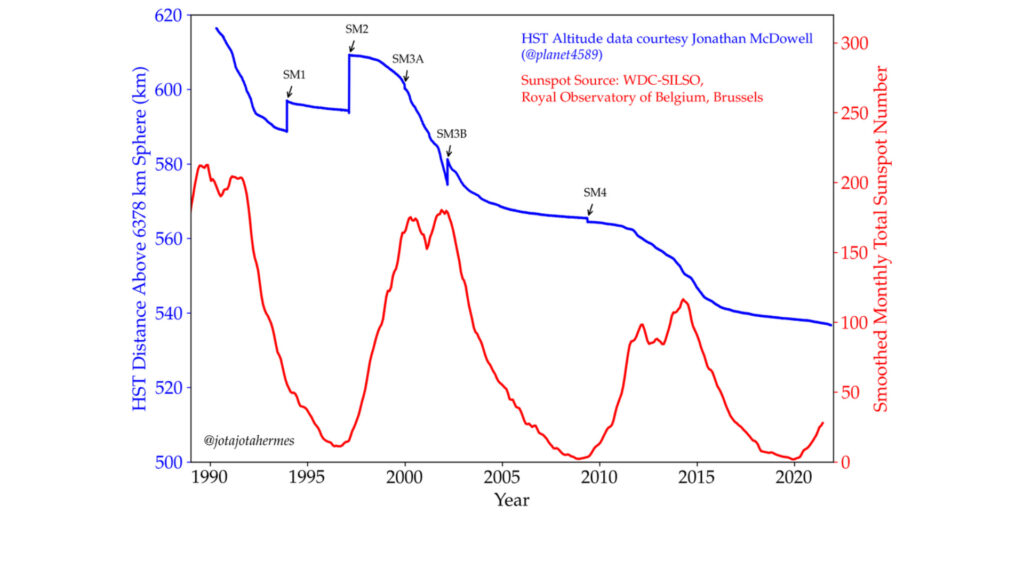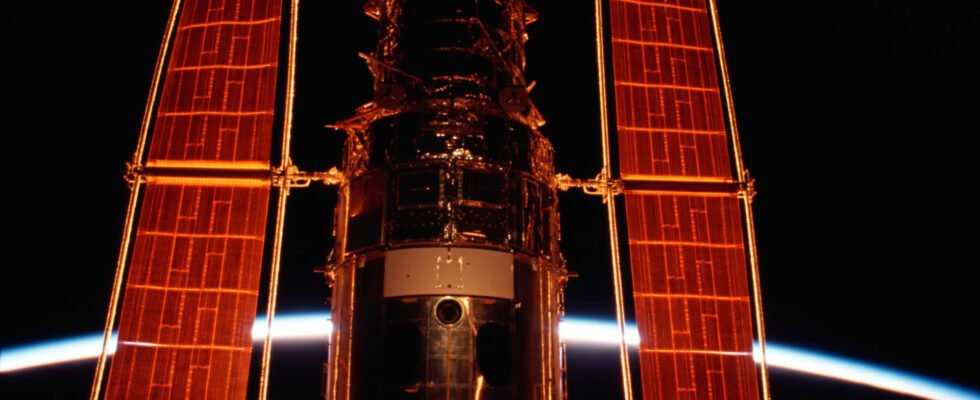The longevity of the Hubble telescope is not linked, like James Webb, to fuel. On the other hand, the survival of the observatory is dependent on solar activity.
The James Webb Space Telescope will be fuel limited, even though it has solar panels. It is essential to maintain its orbit, 1.5 million kilometers from our planet. Its launch was so precise that it should quadruple its lifespan and operate for about 20 years. For Hubble, the operation is different: it does not depend on fuel like the JWST. On the other hand, its longevity depends on the Sun.
More exactly, it depends on the activity of the star. This was detailed by JJ Hermes, assistant professor in the Department of Astronomy at Boston University, in a thread on Twitter on January 10, 2022.” Unlike the JWST, Hubble is in low Earth orbit, circling our planet every 95.4 minutes, explains the expert. Even though it orbits 50 times higher than a commercial airliner, Hubble is still in Earth’s atmosphere, where friction acts as an external force (friction) to slowly pull it back down to earth.. »
In other words, Hubble’s orbit is uncontrolled and it is slowly descending towards Earth. The various maintenance missions that had been carried out between 1993 and 2009 by astronauts had been an opportunity to return to its orbit. Since the last mission of this kind, this has not happened, but Hubble still has room – it evolves at an altitude of 547 kilometers.

The Sun is more active? Bad news for Hubble
What does this have to do with the activity of the Sun? We know that solar activity varies over time, in particular with a variation in the number of spots (regions whose temperature is lower than their environment) present on the surface of the Sun. A new solar cycle has begun in early 2020, with the next peak predicted for July 2025.
Gold, ” when the Sun is more active, it interacts more with the Earth’s atmosphere, hastening the end of Hubble “says JJ Hermes in his thread. It adds a graph allowing to see at the same time the altitude of Hubble (the notes “SM1”, “SM2”, etc., indicate the maintenance missions) in time, as well as the number of sunspots,an indicator of the Sun’s activity.

” Fortunately, the Sun was very quiet during its last 11-year cycle, which probably extended Hubble’s life in orbit by several years. », notice the astronomer. But that may well change, because “ as the Sun’s activity begins to resume, Hubble’s decay rate will begin to increase again (so it will go down further).
What altitude will sound the death knell for the Hubble mission? According to JJ Hermes, it is estimated at 500 kilometers. ” Underneath, NASA doesn’t want to risk Hubble spiraling out of control and unrecoverable. So let’s hope the Sun stays quiet for the next decade so that Hubble and the JWST collaborate for a long time! »
